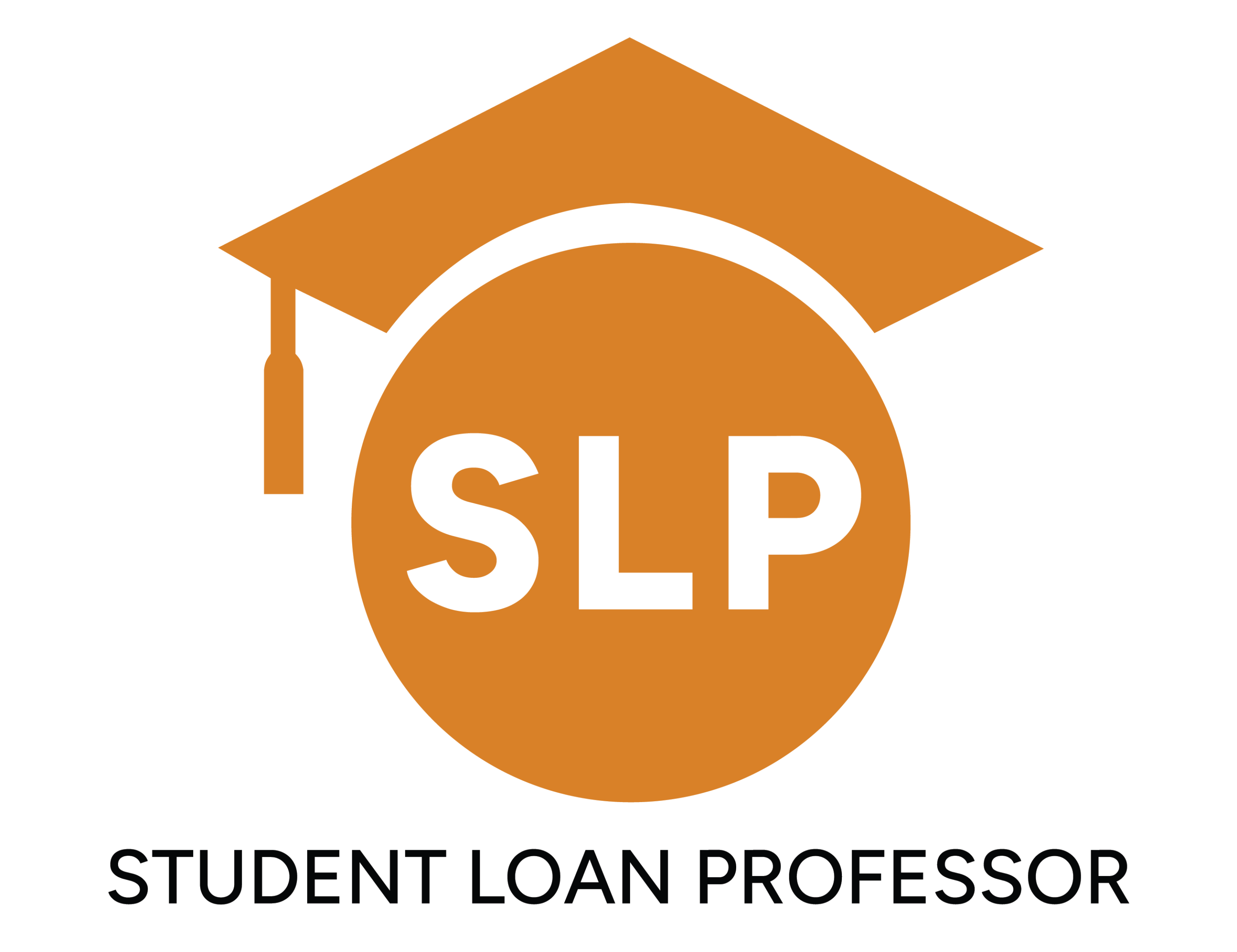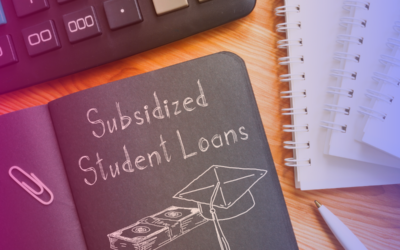When you borrow money under a student loan, you’ll need to repay the borrowed amount plus interest, which is the cost of borrowing money.
Student loan interest is typically calculated based on the amount you borrow, the length of your repayment period, and the agreed-upon interest rate.
Key Takeaways
- Student loan interest is calculated based on your principal, interest rate, and repayment period.
- Federal loans offer fixed interest rates, while private loans may have variable rates.
- Paying more than the minimum or making early payments can reduce your overall interest.
- Refinancing or consolidating loans can lower interest rates and reduce long-term costs.
Breaking Down How Student Loan Interest Works
To understand how your student loan interest works, you need to understand three things:
Principal
Principal refers to the initial amount of money you borrow when you take out your student loan. Think of it as the baseline from which your interest is calculated.
Whenever you make a payment during the loan’s repayment period, the money is first applied to payment fees (such as late fees), then interest charges, and then the remaining money is deducted from the principal balance.
With each monthly payment, your principal decreases, and the interest rate is calculated based on a smaller principal balance. This results in lower total interest paid overall.
Paying more than the minimum monthly amount can quickly reduce your principal, saving you both time and money on your loan.
However, before trying to pay off your loan early, make sure to review the exact terms and conditions of your student loan.
Student Loan Interest Rates
An interest rate is a percentage that lenders charge you monthly or annually. It’s tied to your principal. Lenders usually add interest to your principal balance and then charge you on that sum.
For example, if your principal balance is $6,000 and your interest rate is 5%, the following year, your principal balance would be $6,300, which is $6,000 plus the 5% interest.
The higher your interest rate, the higher your monthly payments will be and the more money you’ll pay by the end of your loan period.
Let’s say you borrow $5,000 and agree to repayment terms of 6% interest over the next ten years. You’ll need to pay about $56 for the next ten years to fully repay your student loan debt.
You will have paid $6,649, which is the principal plus $1,649 in interest, by the end of 10 years.
Before taking out a loan, research student loan interest rates from different lenders and companies to find the best rate that suits your financials.
Types of Interest
There are generally two types of interest:
- Simple Interest: This type of interest is calculated solely on the original principal amount you borrowed.
- Compound Interest: This type of interest factors in both your original loan value and the interest you’ve gathered over time.
For example, if you borrow $1,000 at a 10% annual interest rate using simple interest, the interest is calculated only on the original amount, which is $1,000.
That means you’ll pay just $100 in interest each year. If your loan period is three years, you’ll pay $1,300 (the initial $1,000 plus the $300 interest).
On the other hand, if the interest were compounded, you’d pay $331 in interest because it’s calculated on both the principal and the interest already earned. This would bring your total to $1,331 over three years.
Fixed interest rates are usually easier to calculate and have lower cumulative interest. Compound interest rates can be better if your loan servicer allows you to make extra payments to lower your loan balance or pay back the loan before the entire period ends.
Types of Student Loans
Your interest rate also depends on the type of student loan you sign up for, which is generally one of two types: federal or private student loans.
Federal Student Loans
Federal loans are generally more straightforward because the terms, including interest rates, are fixed and established in advance.
Congress sets federal loan interest rates each year for the following academic year, which means everyone gets the same report regardless of income, financial status, or credit history.
Since federal loans have fixed interest rates, you’ll pay the same amount throughout the loan’s life. They’re also provided by the U.S. Department of Education, which means you can easily qualify regardless of the loan size.
One great thing about federal student loans is that they don’t have a prepayment penalty, which means you can pay off the loan early without getting fined.
Some federal loans offer income-driven repayment plans that make it easier for lower-income individuals to repay the loan. Some might qualify for loan forgiveness programs where the federal loan is scrapped altogether.
Federal loans are either subsidized or unsubsidized.
Subsidized Federal Loans
Subsidized federal loans do not accrue interest while you are in school at least half-time or during deferment periods.
This arrangement allows graduate and professional students the opportunity to complete their education and start earning an income before they need to start paying back the loan and any interest that has accrued.
Unsubsidized Federal Loans
With unsubsidized federal loans, interest accrues from the moment you take out the loan, with the exception of a six-month grace period, which is covered by the federal government.
Private Student Loans
Private student loan interest works similarly to federal ones, but the main difference is that you can choose between fixed and variable rates.
Interest rates vary because banks, online lenders, and credit unions can provide this type of loan. Each company or entity has its own rules for lending money, and most private student loans require a credit check to qualify.
Unlike federal student aid loans, your credit history, previously unpaid interest, and income can affect the interest rate you get for private loans.
Private loans are available to national and international students, while federal loans are solely for national students and eligible non-citizens.
Tips for Managing Your Student Loan Interest
Make Interest-Only Payments
Consider making interest-only payments while you’re still in school or during your grace period, if possible. This keeps your interest low and prevents it from capitalizing and being added to your principal.
If you do this enough times, you can significantly lower the total amount you’ll pay during the loan period.
Work On Your Credit Score
If you opt for a private loan, try improving your credit score first. Lenders see students with high credit scores as low-risk individuals, offering them lower student loan interest rates.
Even a 1-2% lower interest rate can save you significant money, especially if your repayment terms span several years.
Utilize Autopay Discounts
Some lenders give you autopay discounts, which means they lower your annual interest rate if you set up automatic payments.
The discount is usually around 0.25%, which might not seem like much at first, but over time, setting up autopayments can lead to meaningful savings.
Also, automatic payments can help you avoid late student loan payment fees.
Pay More Than the Minimum
Any extra money you pay, in addition to the minimum monthly payments, can help reduce your total outstanding interest. It reduces the accrued interest over time and shortens the loan period, saving you money in the long run.
However, this approach is particularly effective with loans that have variable interest rates.
Shorter Repayment Terms
While a shorter loan period means higher monthly payments, it lowers your monthly accrued interest and overall loan repayment.
However, before choosing this route, make sure that your income or savings can comfortably handle the higher monthly payments.
Student Loan Refinancing or Consolidation
Student loan consolidation or refinancing can lower your interest rates and reduce the overall interest paid over the loan period. Essentially, when you refinance, you replace your existing loan(s) with a new one, ideally at a lower interest rate.
However, you’re more likely to benefit from this strategy if your financial situation has improved since taking out the loan.
For instance, if your credit score has improved or if you’re earning a more stable income now, you might qualify for more favorable loan terms and lower interest rates, which could make refinancing an intelligent choice for saving money.
Take Control of Your Student Loan Interest
Student loan interest can initially seem confusing, but with the proper guidance, managing it becomes much easier. Whether you’re taking out your first loan or refinancing an old one, the Student Loan Professor is here to help.
Book a consultation with our team of experts, and we’ll guide you through the process.

Brandon Barfield is the President and Co-Founder of Student Loan Professor, and is nationally known as student loan expert for graduate health professions. Since 2011, Brandon has given hundreds of loan repayment presentations for schools, hospitals, and medical conferences across the country. With his diverse background in financial aid, financial planning and student loan advisory, Brandon has a broad understanding of the intricacies surrounding student loans, loan repayment strategies, and how they should be considered when graduates make other financial decisions.




![2024 Student Loan Debt Forgiveness Timeline [Updated]](https://www.studentloanprofessor.com/wp-content/uploads/2024/10/Student-Loan-Debt-400x250.png)
